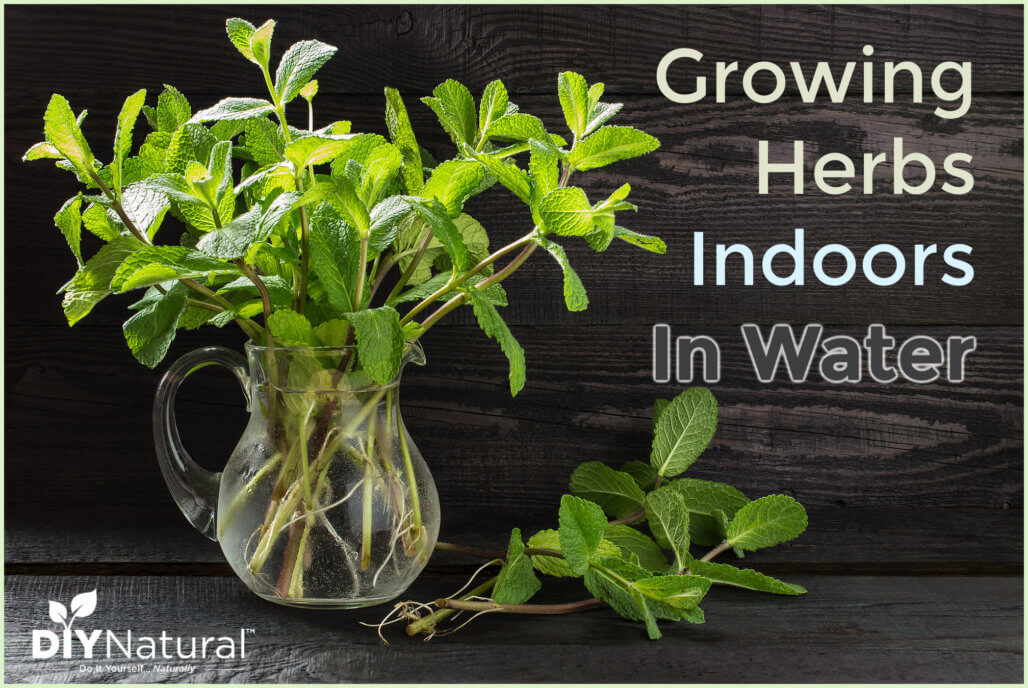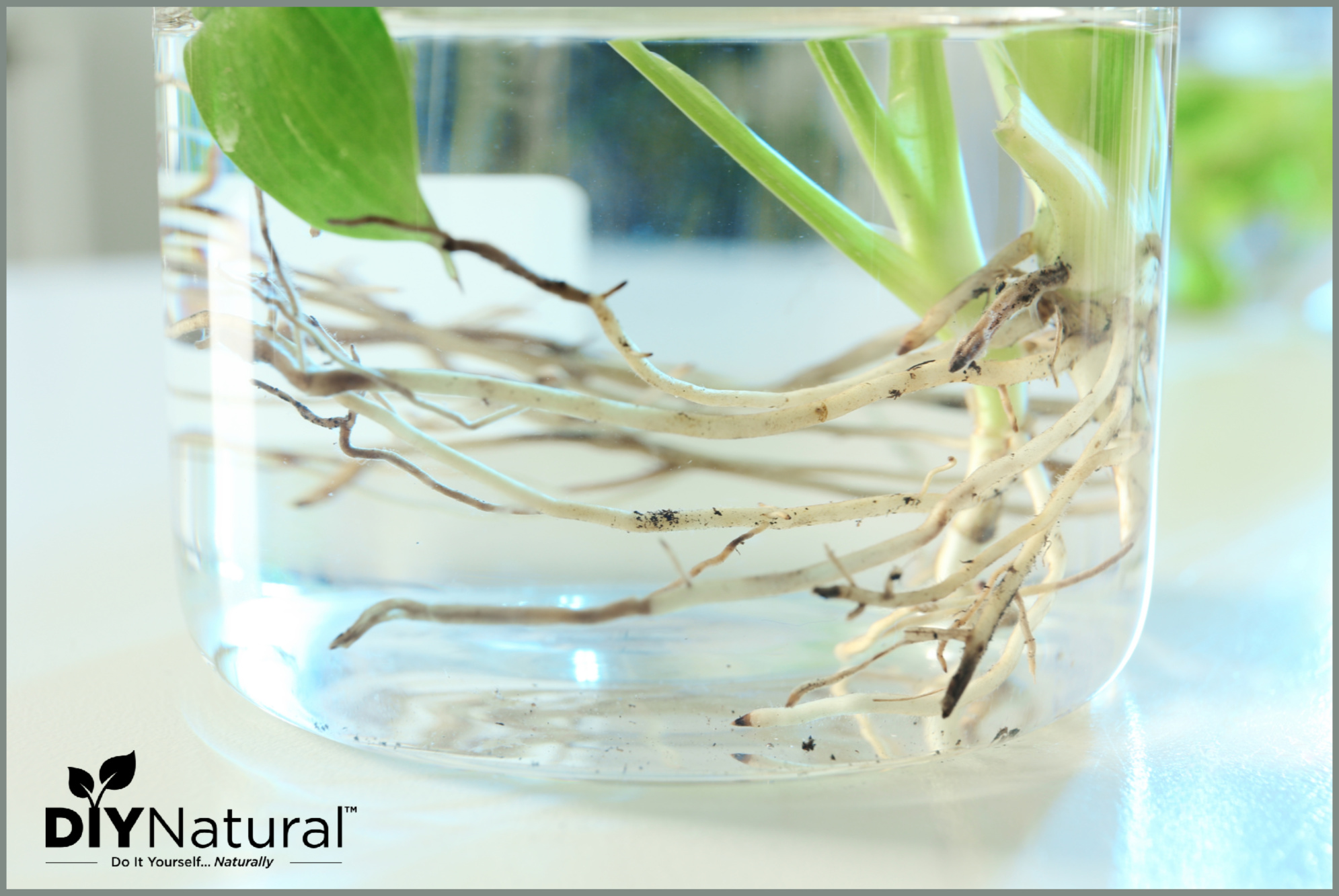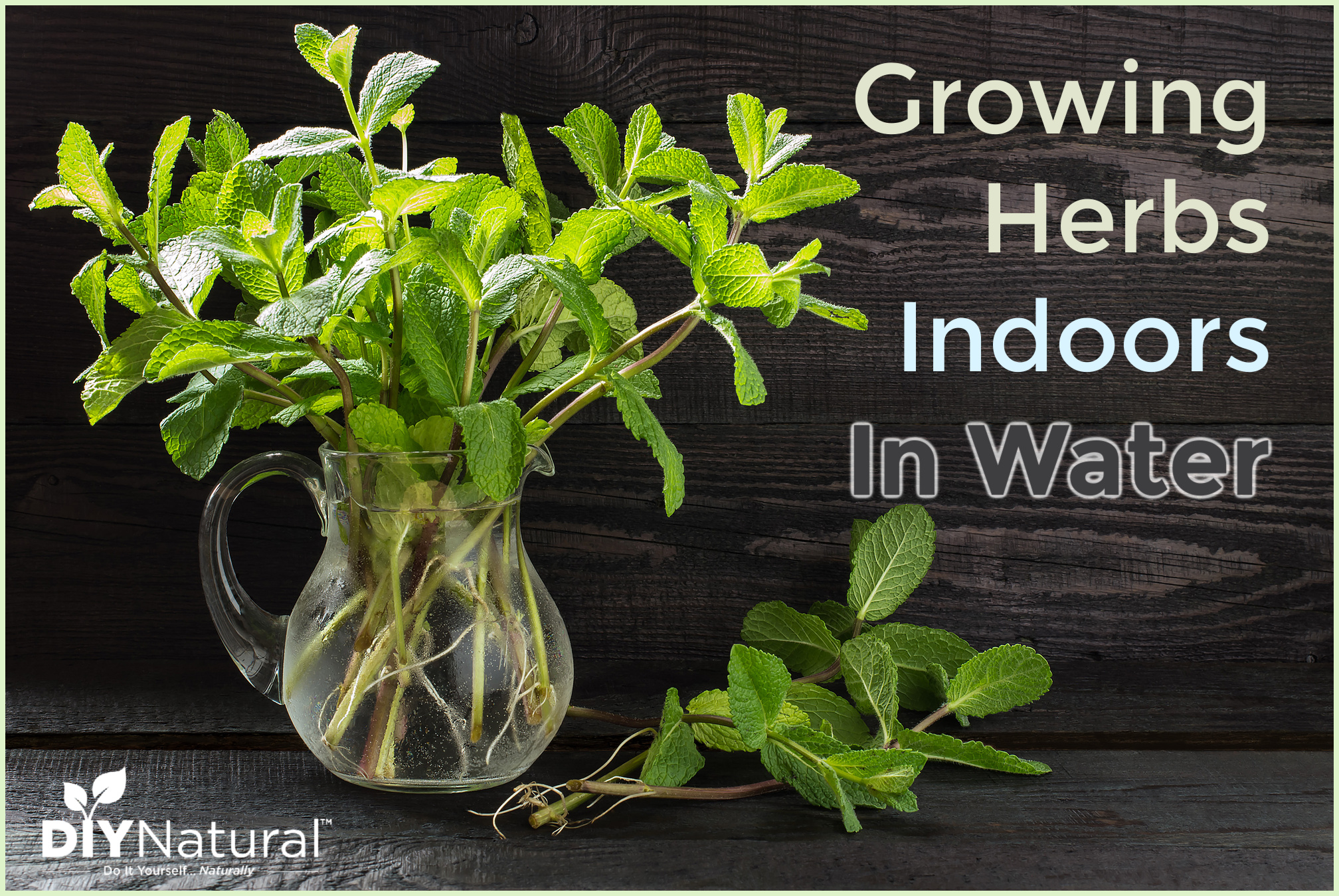
Growing herbs indoors can be tricky, one solution is growing herbs in water. Read on to see how we do it and tips to keep the herbs healthy.
Note: you may also like learning how to grow an indoor herb garden using soil.
There’s nothing better than fresh herbs, but they’re not always available during the entire year. Sure, you can get most herbs dried, but they’re sometimes lacking in flavor and most always in nutrients. Fresh basil compared to dried basil? Nowhere near the same! And if you’ve ever tried to grow herbs indoors, you know it can be a challenge. Here’s a simple way to have fresh herbs all year, inside or out!
Growing Herbs in Water Indoors
The Growing Vessel
First, you’ll need a container to grow the herbs in. I’ve tried old jars, but if the roots grow into a large mass, they can be difficult to get out. One solution is a rocks glass. These are short glass tumblers often sold as a part of a set. They are usually around four inches tall and 3 inches across, sometimes decorative. I find mine at thrift shops for a quarter or so. These glasses are heavy on the bottom, making them perfect for herbs once they get larger. Smaller glasses may not be heavy enough for growing herbs in water once the plants start to grow.
The Water
The next most important thing is water. Spring or well water is best as it usually contains no chemicals, but has minerals that plants need to grow. You can also use rainwater, provided it’s collected straight from the sky. Some roofing materials, such as shingles, have chemicals to retard moss and algae, and this can harm your growing plants. If you collect water and you’re not sure, it’s best to filter it.
The Best Herbs For Growing In Water
While many herbs will grow in water for a time, some will do better than others. Here is a list of some herbs that grow exceptionally well.
- Rosemary
- Oregano
- Lemon Balm
- Mint (most all mints)
- Basil
- Holy Basil (Tulsi)
- Sage
- Thyme
Tip: did you know consuming mint boosts your memory?
The consumption of fresh or powdered herbs from the mint family in culinary doses can help boost memory.[1]
Starting Your Herbs
When you select herbs for growing in water, look for a young branch with new growth. You’ll want about 6-8 inches. Remove the lower leaves and place them in the water. You can usually get 3-4 cuttings in one glass, but as they grow, they’ll need more space. If you plan to take soft cuttings frequently, you can keep more cuttings in a container. If you plan to let the plants get bigger, one per glass is good. Place the glasses on a windowsill.
Maintaining Your Herbs Grown in Water

Once you start your cuttings, you’ll want to change the water once a week or so. They’ll start to grow roots within a week. If they don’t, you can add a rooting hormone or a few twigs from a willow tree. Willows contain a natural hormone that promotes root growth. Once the roots start to grow, you won’t need to change the water, or not change it as much. The roots will filter out excess plant waste.
If the water starts to turn green, or the roots turn green, you may need to block some of the light. Plants need light to survive, so blocking the bottom may be all you need to do. You can tape a piece of paper around the glass, or you can paint the glass before you use it.
Light for Growing Herbs Indoors In Water
Sunlight
During the winter, the light from the sun isn’t strong enough to help the plants to grow. There are several ways to fix this. One is to place the plants outside on a sunny day, but not long enough to burn them. Like you, plants can get sunburned.
Grow Lights
Another way to get light when growing herbs in water are to get a shop light and use daylight-simulated bulbs. These are available at pet stores and hardware stores. The one thing you need to be aware of here is that the bulbs will lose about half their intensity over time. You may not be able to see it with the naked eye, but you’ll see it in the plants. They’ll start to get straggly. Change out your bulbs when you see the plants starting to fail.
Putting Herbs By Windows
Windows are another consideration. You would think that if you put a plant by a window, it’ll get the light they need to survive. Years ago, that may have been true. But now, with the advent of triple pane UV-resistant windows, that no longer holds true. The newer windows filter out harmful UV rays, but these are the same rays that the plants need, so they end up not getting enough sunlight. My Dad had an interesting solution. He installed an old door, one with very old glass, as a window in his new home. As a result, his plants are thriving.
Once you have your herbs growing, you can use them as you would any fresh herb.
Other Things to Grow Indoors
Have you tried growing herbs in water indoors? Now is the time to start!
*******
Sources
- Agatonovic-Kustrin, Snezana, et al. “Essential oils and functional herbs for healthy aging.” Neural regeneration research vol. 14,3 (March 2019): 441-445.




UV radiation is harmful to plants as well as humans. Many newer greenhouses use UV filtering polycarbonate panels in place of glass. UV light induces anthocyanin (purple coloration) production in some plants so a UV filtering window may change the color of purple varieties, but in general, UV filtering glass is not detrimental to plant growth and in some cases has actually been shown to be beneficial.
Thank you for the tips. I moved from Portland, OR to Green Valley, Az this year. So I really have to adjust some of herbs in window ledges and my other plants. My new strawberries (oregon berry) produced twice. My lemon balm died out in Sept and has grown 3-4 inches again. So now I need to get my microgreens going. So thanks for your knowledge!
Hi there, hoping you can answer this question for me. I wanted to grow some herbs, but not sure about putting them on my windowsill in the winter. I live in Alberta, Canada and our winters can get quite cold. even daytime. would you suggest just putting them in the window during daytime only, or at what temperature should I maybe move them off?
(ps I really enjoy your website over the years I keep coming back to it.)
Thank you. Love your articles.
Debra,
Thanks for the tips. I think I’ll move my rooting rosemary a bit closer to my windows. I just wasn’t sure how much light they could take and I didn’t want to stress them. But, now I know.